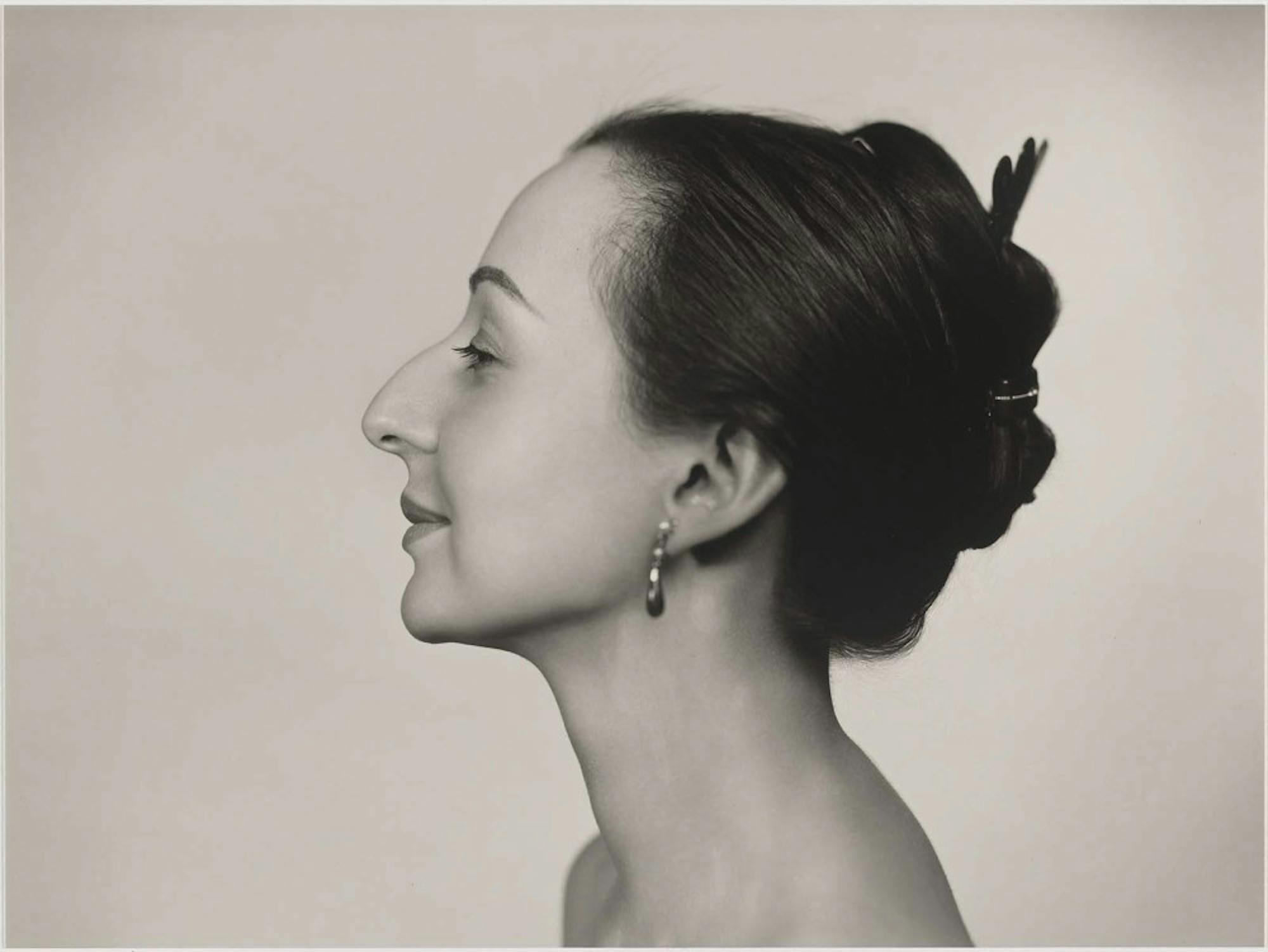If you're not paying close attention, you may miss the new, stunning Yousuf Karsh photography exhibition at the Museum of Fine Arts, Boston. Perhaps the MFA’s most unnoticed exhibition, "Karsh Goes Hollywood" displays the beauty of 20 breathtaking photographs from a long-gone era. Slyly nestled in the Visitor’s Lobby, surrounding a bank of giant Mac desktops for browsing the museum’s website, the collection is set on sleek chrome walls that lead into the open, entirely glass room that houses the MFA’s café. The photographs are such a seamless addition to the scene that their presence fits almost too snugly into the atmosphere. Yet, the striking contrast of the photos in “Karsh Goes Hollywood” -- gelatin silver prints of stars from the Golden Age of film -- are crisp enough to pop off the walls, allowing museum-goers to feel that they have just walked into a room filled with famous faces of the '50s and '60s.
The exhibit is a collection of 20 prints of famous characters and filmmakers from classic Hollywood movies. Notables include a portrait of Audrey Hepburn (photograph taken in 1956) as Princess Ann in “Roman Holiday” (1953), Lauren Bacall (1966) as Slim in “To Have and Have Not” (1944), and Peter Lorre (1946) as Doctor Gogol in “Mad Love” (1935). Beside each photograph lies an iconic quote by each character as the only given diagnostic material. "Walt Disney" (1956) breaks this pattern with a quote by the entertainer himself rather than a character from one of his movies, as does "Alfred Hitchcock" (1960).
Karsh, heralded as one of the greatest portrait photographers of all time, was a predecessor of such greats as Richard Avedon, Annie Liebovitz and Patrick Demarchelier. With a command of lighting, an eye for composition and an uncanny ability to capture unsettling emotion on a print, Karsh’s technical mastery is unparalleled. However, it is his eye as an artist that makes the Karsh show so artistically engaging. The photographs featured in the Jean S. and Frederic A. Sharf Visitor Center are arranged in the most technologically modern room in the museum. The juxtaposition of the modern and the classical, of wireless technology and portrait subjects from the days of black-and-white film, is so deliberate that it is practically twee. The location is a surreptitious dig at modernity, at the museumgoer’s propensity to race through exhibitions merely to capture everything with the perfect Instagram filter, to set the mood for his or her “Day at the Museum” Facebook album.
But the complexity of the exhibition increases with the removal of certain diagnostic materials; namely, the bare quotes of each actor’s character from the featured movie. Visitors cannot simply take in the identity of the actor portrayed. Instead, they are forced to examine the photo as a portrait of each iconic film’s character, and then deeper, as a picture of the actor or actress in that role. The interplay between the real and the imagined, the true character and the audience’s projection onto each thespian, is astounding. Each photograph ceases to show a single actor, but instead depicts the secret world of the character they have embodied, their ability to transcend expectations. This, in turn, allows the audience to reevaluate their own lives and the layers that make up a personality.
After all, how can one look at a picture of Humphrey Bogart (photograph from 1946) without seeing him as strictly Rick in “Casablanca” (1942), saying, as he cooly smokes a cigarette, “Of all the gin joints, in all the towns, in all the world, she walks into mine.” That is the genius of the exhibition. America’s obsession with celebrity is put on a pedestal and then turned on its head, calling to mind Dorothy's chaotic flight into a tornado only to touch down in Oz. Coincidentally, this character is also pictured in “Judy Garland” (1946).
As actors become characters, so often characters become the actors who play them. The jolt of seeing famous faces only as their famous characters reminds us to be in the present, to examine the scope of cinematic culture not through rose-colored glasses but with a critical eye. Photography is a depiction of a specific viewpoint that is then printed for the audience to absorb. It is this subtly self-critical look at celebrity and a flawless depiction of cinematic beauty that makes the Karsh exhibition an absolute must-see.
“Karsh Goes Hollywood” is on display now through March 8, 2015 at the Museum of Fine Arts, Boston. Tickets are free with a valid Tufts or SMFA ID.
Yousuf Karsh exhibition at MFA a window to golden era Hollywood

With a minimalist approach, Karsh captures his wife in a profile portrait.





